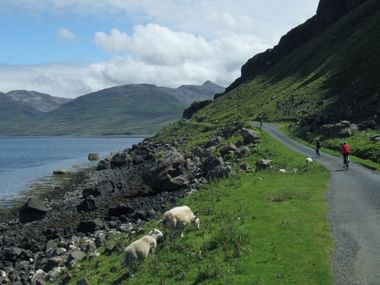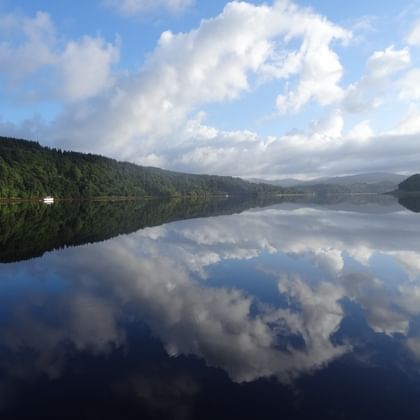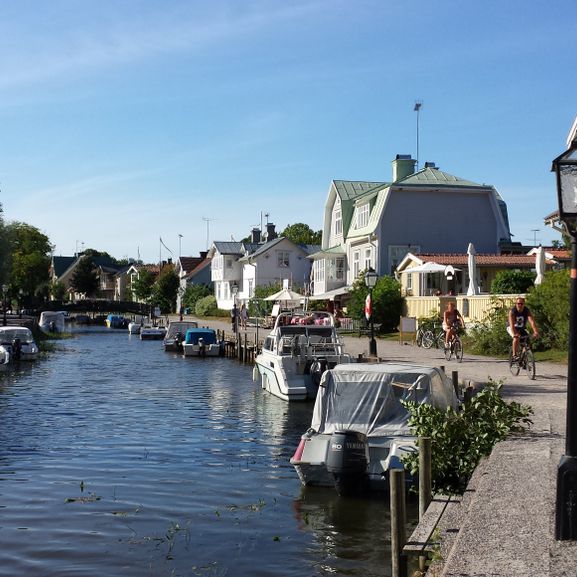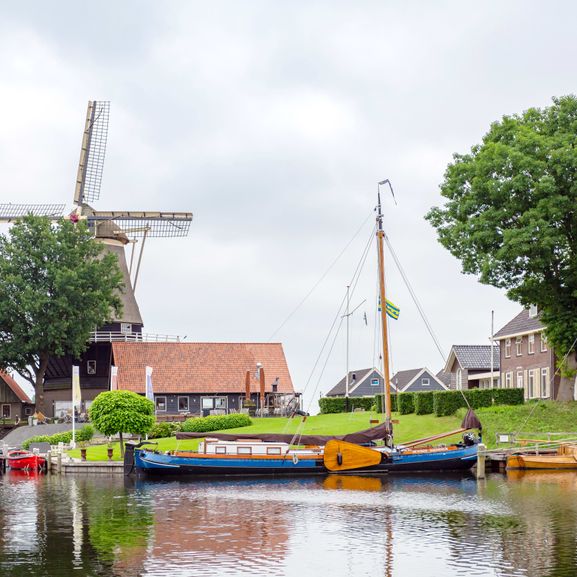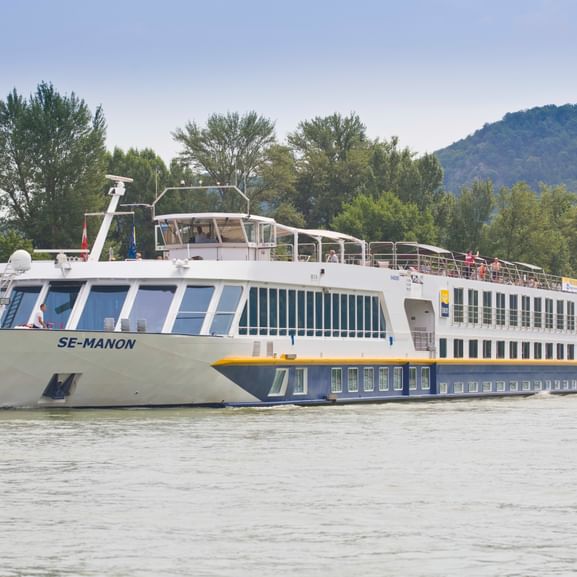Cycling through wild nature
Bike holidays in Scottland
Lochs and glens, highlands and islands. In Scotland, you cycle through wild nature, mostly on small side roads or specially created cycle paths. The UK's national and regional cycle routes are excellently signposted and visible from afar. A dream for cyclists! Cliffs and coastline, castles and mountains await you in a country that is proud of its history and culture.
Castles and mountains, palaces and cathedrals
Scotland's capital Edinburgh was built on former volcanoes. One of them offers an outstanding view: Arthur's Seat. From the top, you can see medieval and Gregorian architecture in the Old and New Towns. Over there is the Palace of Holyroodhouse, where the King resides when he is in Scotland, and the Scotch Whisky Experience on Edinburgh's Royal Mile, the world's largest collection of Scotch whisky with 3,500 different bottles. Because ‘Eddnborrou’ with a rolled R is the whisky capital and also the spooky capital. The closes, the alleyways, are haunted. There is also a varied selection of ghost tours. No wonder Harry Potter was invented here and Robert Louis Stevenson's ‘Dr Jekyll and Mr Hyde’ is set in Edinburgh's streets. Harry Potter is sure to come flying around St Giles' Cathedral. Muggles and tourists push their way through the Royal Mile. Whisky and tartan shops can be found in pointed gabled, granite houses that look like little castles. Inside the Tartan Weaving Mill & Exhibition, you are lured by the clacking and hissing of the tartan, where you can marvel at the creation of the Scottish chequered patterns of the various clans. A little further on, you can marvel at the men changing the guard in front of the castle in their smart kilts and jagged stride.
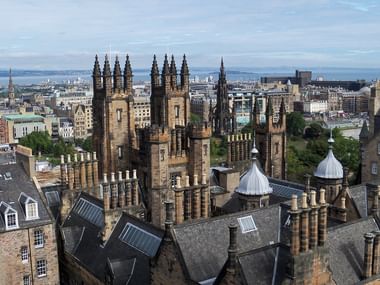
Cathedrals and Palaces
There are always cathedrals and palaces in Scotland, e.g. Falkland Palace, a former hunting lodge of the Stuarts (built 1501 - 41) with the Royal Tennis Court, probably the oldest tennis court in the world today. St Andrews, on the other hand, is a place of pilgrimage with a mighty cathedral in Norman-Gothic style, a university town and, above all, the home of golf. The world's first 18-hole course was built in St Andrews in 1764. Every golfer's dream is by the sea: it is the Old Course, which has existed since the 18th century.
Aberdeen is also known as Granite City. In addition to being a silver-grey granite city, ‘Ebrrdiehn’ is also a boomtown. Things have been hectic in the economic metropolis since oil was discovered here. Outside the city lie the oil rigs. Inside, people rush through Union Street. In contrast, Old Aberdeen, a little further north, seems like a quiet village idyll on the Don estuary. At King's College there is concentrated calm, students make a pilgrimage across the campus and St Machar's Cathedral is mostly yours alone.

Whisky and haggis
The best way to ground yourself is to visit one of the many pubs. That's where you take your ‘wee dram’, a tiny sip of whisky. You can also indulge in cask ales, unfiltered, unpasteurised beers, various teas and coffees in the museum-ready, cathedral-like pubs and cafés. Try Scottish oat cakes or shortbread made from sugar, butter and flour with your tea. Attention, substantial, but so good!
‘Smokies’ is the name given to smoked haddock. They would keep well, but can also be eaten in the sun at a pretty little harbour with bobbing fishing boats.
The Scottish national dish, however, is haggis, which in its purist form consists of offal, oatmeal, minced beef and onions in sheep's stomach. Robert Burns wrote the ‘Ode to Haggis’ in 1786, which is still recited today at the annual Burns' Supper, the birthday of the national poet.
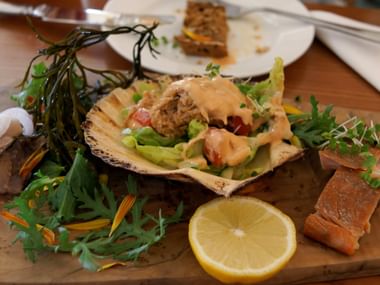
Checks, clans and tartans
It is well known that the Scots wear chequered skirts. These so-called kilts consist of a piece of tartan (chequered fabric) that is wrapped around the hips. The different chequered patterns have a long tradition and indicate the different clans.
Perhaps you will experience one of the many different Highland Games, where Scottish culture is upheld: The bagpipes, the Scottish national instrument, are played and many different competitions in Scottish sports are held, e.g. log throwing, hammer throwing, tug of war and Highland dancing.
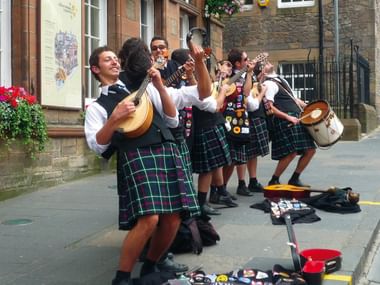
Fifty shades of Green
Countless fjords, inlets and steep cliffs line the Scottish coast. In between are small, fine beaches. There are also countless islands. It's maritime, and the seagulls whistle.
Inland, the land is hilly and green: grass-green golfer's turf, light green humps and soft green hills, with shimmering olive-green lochs and lakes. In the background, thin white wisps of cloud chase through the sky. Every now and then, the silhouette of a majestic horse or rusty brown Scottish cattle stands out against the dawning sky. It is drizzling. But this gives the landscape a magical touch, and the greenery has to come from somewhere. The many humps and hills, called Munros, are also covered in green grass. The hills, which are over 3,000 feet (914 metres) high, are called Munros because it was Sir Hugh Munro who once slipped into a kilt and set out to count them.
Bird watching is all the rage here - no wonder, given the many different bird species that live here or pass through. Armed with binoculars and identification books, people trudge along footbridges and watch birds plunge headfirst into the sea to catch fish.
Cycle through enchanted forests with man-high ferns and dunes and be enchanted by the rugged landscape and the warm-hearted people. ‘Haste ye back!’ is how they say goodbye here. Come back soon!
